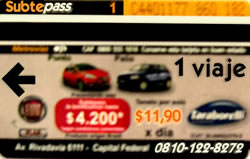Visas
No visa is necessary for most countries (check with the Argentine Embassy in your home country). The tourist visa will allow you to spend 90 days in Argentina for tourism or business.
What to Bring
Dictionary; Spanish grammar book in your own language; a guidebook; novels; a small gift for the guest family; a warm jumper/sweater; a raincoat; walking shoes/hiking boots; sleeping bag; water purification tablets; pocket knife; torch/flashlight.
Jetlag
Jetlag is caused by the disruption of your "body clock" - a small cluster of brain cells that controls the timing of biological functions (circadian rhythms), including when you eat and sleep. The body clock is designed for a regular rhythm of daylight and darkness, so it is thrown out of "sync" when it experiences daylight and darkness at the "wrong" times in a new time zone. The symptoms of Jetlag often persist for days while the internal body clock slowly adjusts to the new time zone.
Abstaining from alcoholic beverages while on board (and drinking lots of water instead) is both a physical and a mental remedy--it helps to offset dehydration and it promotes mental clarity. There is no quick fix to alleviate all the symptoms of jetlag. Spend some time outside during daylight hours and try to surround yourself with as much light as possible. It is also important to adjust your bedtime to the new, local timetable as soon as possible. Along with the adoption of the local bedtime, try doing what the locals do: adopt their food preferences, meal times, and recreational activities to help in the adjustment.
Climate
Due to Argentina’s diversity in geography, the climate varies from region to region. Winter in Argentina begins in July and lasts until October, where the summer extends from December to March. The winter is cold, rainy, and has short days, whereas the summers are hot and humid with longer days. It is recommended that students bring a wet weather coat and a warm coat for the nights during the winter.
Money in Argentina
The currency of Argentina is the Argentine Peso. As of September 2008, the exchange rate is 3.70 Argentine pesos equivalent to 1 USD. Most credit cards are accepted and ATMs are found throughout the city. The Argentineans use the $ sign as well when discussing pesos, so do not be confused! Often times you will see u$d or US$ when talking about American dollars. However, if you see that something is stated as being $5, it usually means that it is in the local peso currency.
Transport in Argentina
Traffic accidents are the primary threat to life in Argentina. Pedestrians and drivers should exercise caution while walking and driving in the city. Drivers frequently ignore traffic laws and vehicles often travel at excessive speeds.

Public transportation is generally reliable and safe. The preferred option for travel within Buenos Aires and other major cities is by radio taxi or "remise" (private car with driver). The best way to obtain safe taxis and remises is to call for one or go to an established stand, rather than hailing one on the street. Hotels, restaurants and other businesses can order remises or radio taxis, or provide phone numbers for such services, upon request. Passengers on buses, trains, and the subway should be alert for pickpockets and should also be aware that these forms of transport are sometimes interrupted by strikes or work stoppages. Driving in Argentina is generally more dangerous than driving in the United States. By comparison, drivers in Argentina tend to be very aggressive, especially in the capital city of Buenos Aires, and frequently ignore traffic regulations. U.S. driver's licenses are valid in the capital and the province of Buenos Aires, but Argentine or international licenses are required to drive in the rest of the country.